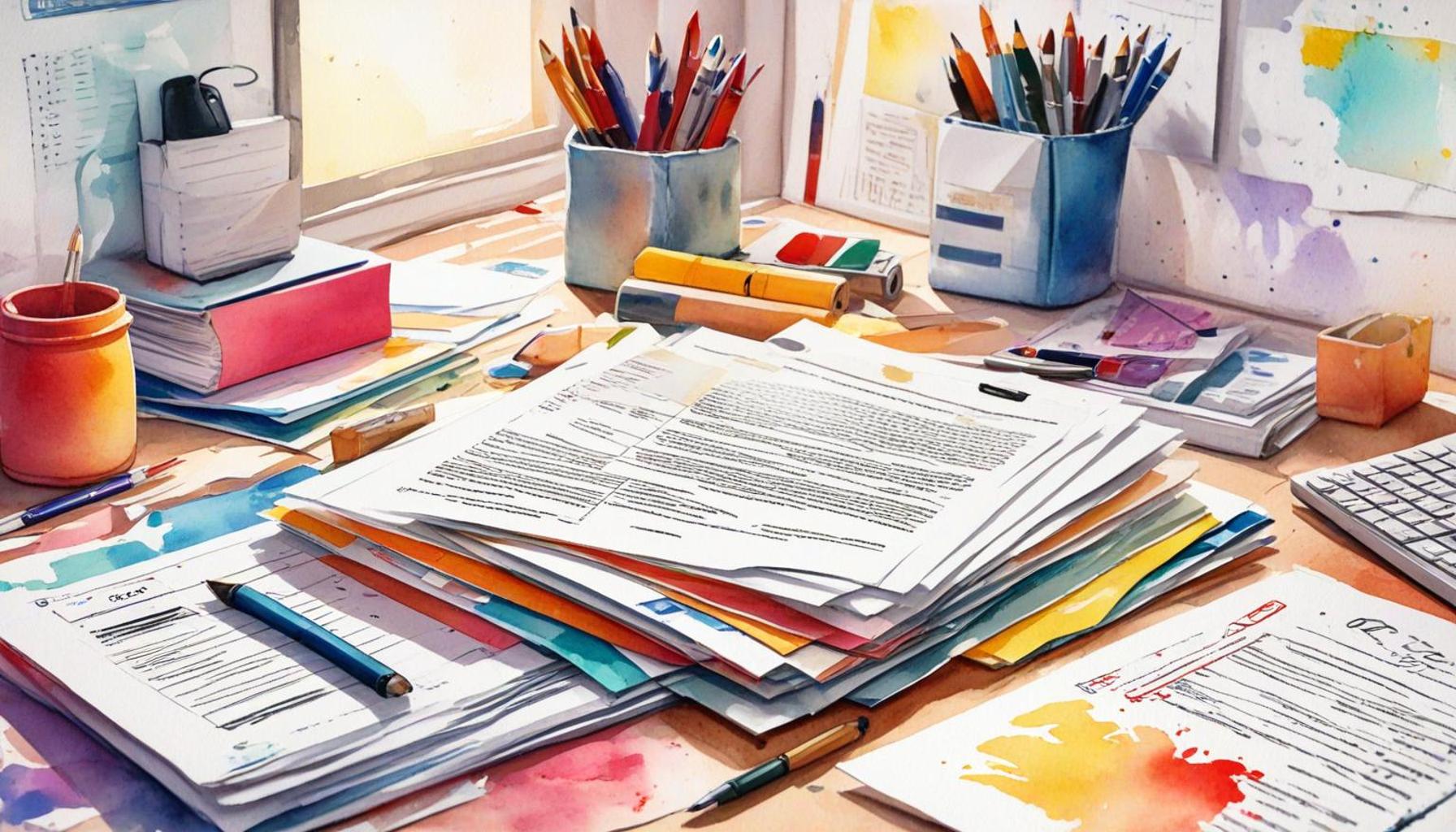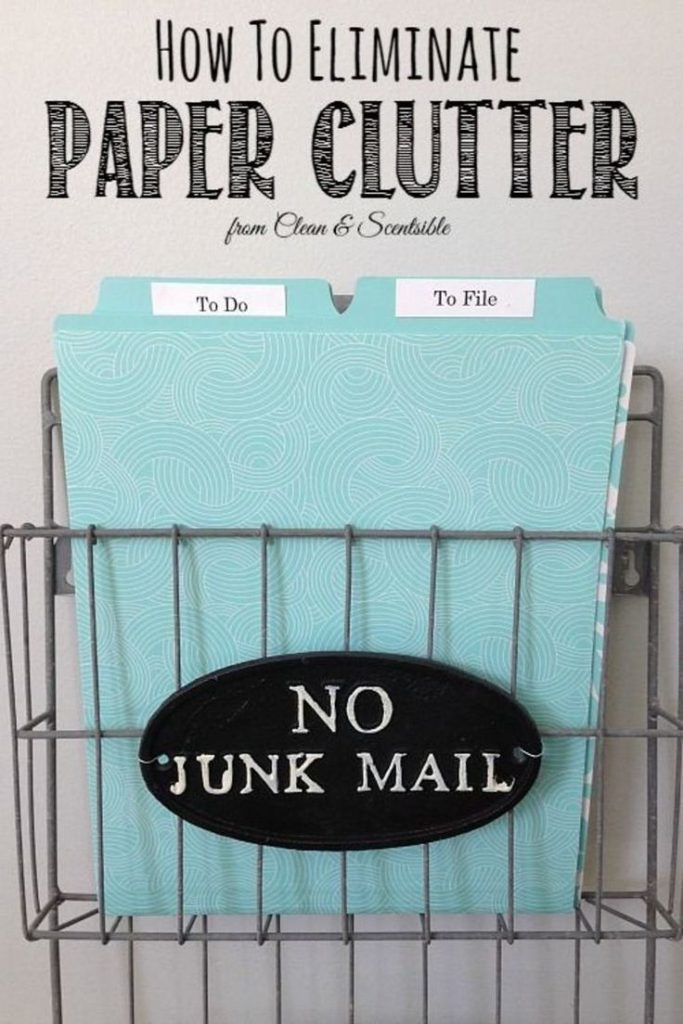Decluttering Paperwork: Tips for Organizing Documents and Reducing Clutter in Your Office

Transform Your Workspace with Effective Paper Organization
Are you overwhelmed by piles of paperwork cluttering your office? Thousands of Americans struggle with managing their documents, leading to inefficiency and stress. Decluttering paperwork is not just about aesthetics; it’s essential for boosting productivity and maintaining mental clarity. In fact, studies show that a disorganized workspace can lead to increased anxiety and hinder cognitive functions, making it crucial for individuals to take charge of their paperwork.
Consider these compelling reasons to take control of your documents:
- Increased Efficiency: When your documents are sorted and labeled, finding important files becomes not only possible but effortless. Imagine being able to locate a critical contract or email correspondence within seconds, allowing you to spend more time making decisions rather than sifting through piles of papers.
- Enhanced Focus: A tidy workspace fosters a stress-free environment. Research suggests that a clutter-free area significantly improves concentration levels. A clean desk allows your mind to focus on current tasks rather than distractions from the chaos surrounding you.
- Better Space Utilization: By organizing your documents, you can maximize the functionality of your office area. Use vertical space with shelves or wall-mounted organizers to keep your workspace open and inviting. Consider storing less frequently used items out of sight to free up your desk for immediate tasks.
Imagine stepping into your office and instantly feeling at ease, free from the stress that stacks of unorganized paperwork can bring. Achieving this transformation is possible with practical strategies tailored to your workflow. Start by dedicating just 10-15 minutes each day to sort through your papers. Create a system of categories that works for you—whether it’s by project, urgency, or type of document—so you can quickly identify what you need. For instance, use colored folders to differentiate between urgent matters and routine tasks, helping you prioritize your workload effectively.
Throughout this article, you will uncover essential tips for organizing documents, explore innovative techniques, and learn valuable insights to navigate the paperwork jungle effectively. From digital options like cloud storage to physical methods such as binders and filing cabinets, each strategy has its merits and can complement your unique working style. Join the journey towards a streamlined office and reclaim your valuable time, reducing not just clutter but also the stress that comes with it.
In conclusion, an organized workspace is not merely a personal preference but an essential component of professional success. By taking deliberate steps to manage your documents, you pave the way for improved efficiency and enhanced focus, ultimately leading toward greater achievements in your career. So why wait? Start your organizational journey today!

DISCOVER MORE: Click here to learn about the benefits of meditation</p
Start with a Plan: Assessing Your Paperwork Situation
Before diving into decluttering your paperwork, it’s crucial to take a moment to evaluate your current situation. This first step sets the stage for an effective organization process, ensuring you make informed decisions about what to keep, discard, or digitize. Begin by gathering all the paperwork from various areas in your office, including your desk drawers, filing cabinets, and even that one catch-all box that you’ve been avoiding. Once you have everything in one place, you can better assess the volume and categories of documents you’re dealing with.
Next, consider implementing the four D’s framework: Delete, Delegate, Docket, and Do. This approach not only helps in professional settings but is also a practical guide for personal paper management:
- Delete: Identify documents that are no longer necessary. This can include old receipts, outdated contracts, or promotional materials. Consider if you really need a physical copy or if a digital version would suffice.
- Delegate: If you’re in a team environment, delegate certain documents to colleagues who are responsible for them. This reduces your individual load, allowing for more focused organization.
- Docket: For items that are important but not urgent, create a ‘docket’ or tickler file. This system helps remind you of important tasks and due dates without cluttering your immediate workspace.
- Do: Lastly, tackle the documents that require immediate action. Whether it’s signing a contract or responding to a time-sensitive email, handle these tasks swiftly to prevent further accumulation of paperwork.
Once you’ve assessed and categorized your paperwork, consider *how* you’re going to organize what remains. Establishing a filing system that works for you is key. Here are a few strategies to consider:
Create a Color-Coded System
Implementing a color-coded system is an effective way to quickly identify categories of documents. For instance, use blue for financial documents, green for client-related materials, and yellow for project-specific paperwork. This visual separation allows you to navigate your files at a glance, reducing the time spent searching through folders.
Embrace Technology with Digital Solutions
In today’s digital age, combining physical organization with paperless solutions can vastly enhance your efficiency. Consider scanning important documents and storing them in cloud services such as Google Drive or Dropbox. Not only does this free up physical space, but it also creates a backup for your important files. Assess which documents are best kept digitally and set up a routine to regularly clear out your digital files just as you would your physical ones.
By taking the time to create a comprehensive plan and applying thoughtful strategies to categorize your paperwork, you set the foundation for an organized workspace. Each step of this decluttering process brings you closer to a streamlined office environment, helping reduce clutter and stress. As you venture further into this decluttering journey, exciting revelations about productivity and efficiency await you, offering fresh insights into office management and work-life balance. Stay tuned for more tips and techniques in this ongoing endeavor!
| Category | Details |
|---|---|
| Digital Organization | Transitioning to digital formats can greatly reduce physical clutter. |
| Strengthened Efficiency | Having well-organized files enhances productivity and speeds up document retrieval. |
When pursuing the journey of decluttering paperwork, embracing digital organization is essential. By converting physical documents into electronic files, you can not only minimize physical space usage but also gain the ability to access, search, and share documents in a fraction of the time. Utilizing cloud storage solutions can provide an added layer of security and convenience, allowing you to eliminate piles of paperwork while ensuring your vital documents are backed up and easily retrievable.Another significant advantage is strengthened efficiency. When files are rightly categorized and arranged, it cuts down the time spent sifting through unordered stacks. Incorporating color-coded folders or labels can enhance this system. Implementing a consistent archiving schedule and routine decluttering sessions can take your office organization to new heights, thus promoting a more streamlined workflow that ultimately leads to increased productivity. Reducing clutter not only fosters a calming workspace but also transforms the way you interact with your documents, aiming for a more efficient and enjoyable office environment.
DIVE DEEPER: Click here to learn how to effectively declutter your home</p
Implementing a Sustainable System: Maintaining an Organized Paperwork Process
Once you have categorized and organized your paperwork, the next step is ensuring that the system you’ve created is sustainable over time. Without regular upkeep, even the most meticulously organized paperwork can quickly become disheveled again. To prevent this, consider adopting a few key practices that can help maintain order within your office environment.
Regular Review Schedule
Establish a routine for reviewing your paperwork. By setting aside time weekly or monthly to assess your documents, you can tackle potential accumulation before it spirals out of control. This can be as simple as dedicating 15 to 30 minutes every Friday afternoon to scan through your paperwork and ensure that everything is filed properly or even deciding if any new items are eligible for the four D’s approach. Developing this habit not only keeps your workspace tidy but also serves as a moment to reflect on your growing obligations.
Adopt a ‘One-In, One-Out’ Rule
To keep your paperwork from piling up, implement a ‘one-in, one-out’ policy: for every new document you bring into your office, aim to remove an existing one. This practice can be particularly useful in preventing excessive accumulation of paperwork. When receiving a new document, assess its necessity and evaluate any previous papers associated with that subject matter. This proactive approach turns your organization into a dynamic system where space and clarity are continually maintained.
Utilize Technology for Document Management
Beyond just scanning documents, consider using document management software tailored to reduce clutter. Tools such as Evernote, OneNote, or specialized software like M-Files or Document Locator can help you create a digital filing system that is searchable and easily navigable. By categorizing documents with tags and keywords, you can quickly find what you need without sifting through stacks of paper. These digital solutions can be synchronized across devices, enabling you to access important files from your computer, tablet, or smartphone, thus enhancing your overall efficiency.
Collaborate with Mini-Workshops
If you work in a team setting, consider organizing mini-workshops focused on paperwork organization and decluttering strategies. These collaborative sessions can foster accountability among team members, share successful methods, and provide an opportunity to brainstorm solutions for persistent documentation challenges. A collective effort towards maintaining an organized workspace encourages shared responsibility and reinforces the importance of clutter management.
Leverage Professional Help for Major Overhauls
If the volume of paperwork feels overwhelming, seeking professional organizing help can be a worthwhile investment. Professional organizers specialize in organizing physical and digital spaces alike, providing tailored solutions that can streamline your paperwork and office setup. They often come equipped with innovative strategies and expertise, allowing you to learn valuable tips while significantly decluttering your office space.
Implementing these sustainable practices not only reduces clutter but also cultivates a workspace that encourages productivity and clarity. Viewing decluttering as an ongoing journey, rather than a one-time task, ensures that you remain engaged in maintaining an organized office environment. By prioritizing organization through technology and sound practices, you can transform your office into a place of inspiration and efficiency, allowing you to focus on your work rather than searching for misplaced documents.
DISCOVER MORE: Click here for minimalist organization tips
Conclusion: Embracing Clutter-Free Productivity
In a world where information overload is the norm, decluttering paperwork emerges as an essential practice for enhancing productivity and overall well-being in your office environment. By implementing strategic organization methods, such as the four D’s of document management and the useful ‘one-in, one-out’ rule, you can significantly reduce the chaos that often leads to stress and inefficiency.
Furthermore, embracing technology through document management systems not only simplifies access to vital information but also liberates physical space, creating a more agile workspace. As remote work becomes increasingly prevalent, the shift to digital files can streamline collaboration and ensure that every team member remains in sync without the burden of excessive physical paperwork.
Remember, effective organization is not just about removing existing clutter but also about instituting sustainable habits that keep chaos at bay. Engaging in regular review schedules, utilizing collaborative workshops, and even seeking professional assistance when necessary all contribute to long-lasting order. These strategies foster an environment where creativity and focus thrive, ultimately leading to enhanced performance and satisfaction.
In conclusion, tackle your paperwork issues with intention and diligence. The journey towards a clean and organized office is ongoing, but the rewards—greater efficiency, improved clarity, and peace of mind—are well worth the effort. As you embark on this decluttering mission, prepare to transform your workspace into a sanctuary of productivity, where you can channel your energy into what truly matters—your work.


